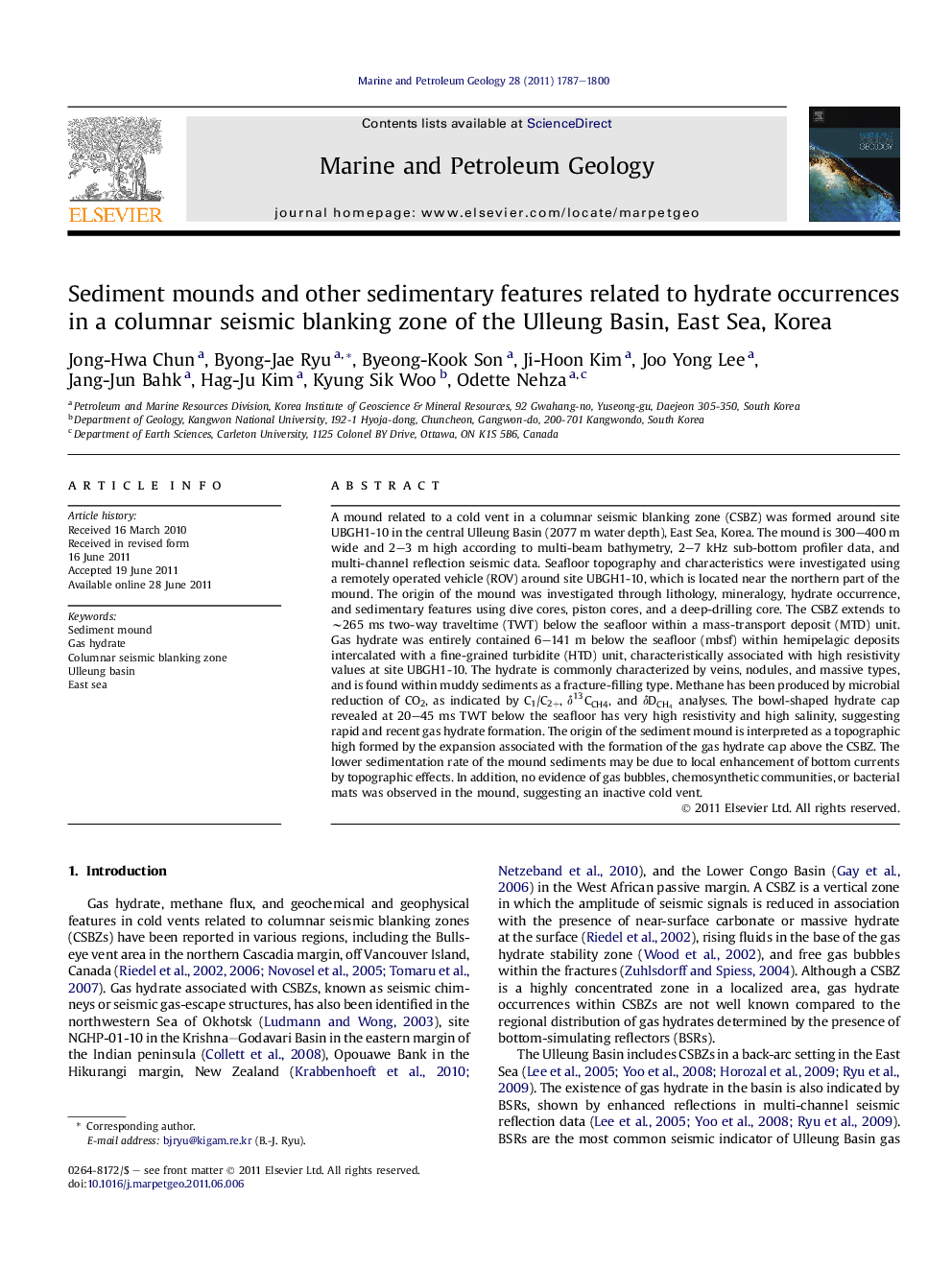| کد مقاله | کد نشریه | سال انتشار | مقاله انگلیسی | نسخه تمام متن |
|---|---|---|---|---|
| 4696116 | 1351657 | 2011 | 14 صفحه PDF | دانلود رایگان |

A mound related to a cold vent in a columnar seismic blanking zone (CSBZ) was formed around site UBGH1-10 in the central Ulleung Basin (2077 m water depth), East Sea, Korea. The mound is 300–400 m wide and 2–3 m high according to multi-beam bathymetry, 2–7 kHz sub-bottom profiler data, and multi-channel reflection seismic data. Seafloor topography and characteristics were investigated using a remotely operated vehicle (ROV) around site UBGH1-10, which is located near the northern part of the mound. The origin of the mound was investigated through lithology, mineralogy, hydrate occurrence, and sedimentary features using dive cores, piston cores, and a deep-drilling core. The CSBZ extends to ∼265 ms two-way traveltime (TWT) below the seafloor within a mass-transport deposit (MTD) unit. Gas hydrate was entirely contained 6–141 m below the seafloor (mbsf) within hemipelagic deposits intercalated with a fine-grained turbidite (HTD) unit, characteristically associated with high resistivity values at site UBGH1-10. The hydrate is commonly characterized by veins, nodules, and massive types, and is found within muddy sediments as a fracture-filling type. Methane has been produced by microbial reduction of CO2, as indicated by C1/C2+, δ13CCH4δ13CCH4, and δDCH4δDCH4 analyses. The bowl-shaped hydrate cap revealed at 20–45 ms TWT below the seafloor has very high resistivity and high salinity, suggesting rapid and recent gas hydrate formation. The origin of the sediment mound is interpreted as a topographic high formed by the expansion associated with the formation of the gas hydrate cap above the CSBZ. The lower sedimentation rate of the mound sediments may be due to local enhancement of bottom currents by topographic effects. In addition, no evidence of gas bubbles, chemosynthetic communities, or bacterial mats was observed in the mound, suggesting an inactive cold vent.
► We found a mound related to a columnar seismic blanking zone in the Ulleung Basin.
► Gas hydrate was entirely contained 6e141 m below the seafloor.
► Methane has been generated by microbial reduction of CO2.
► The bowl-shaped hydrate cap revealed at 20–45 ms TWT below the seafloor.
► The mound is interpreted as a topographic high produced by expansion.
Journal: Marine and Petroleum Geology - Volume 28, Issue 10, November 2011, Pages 1787–1800